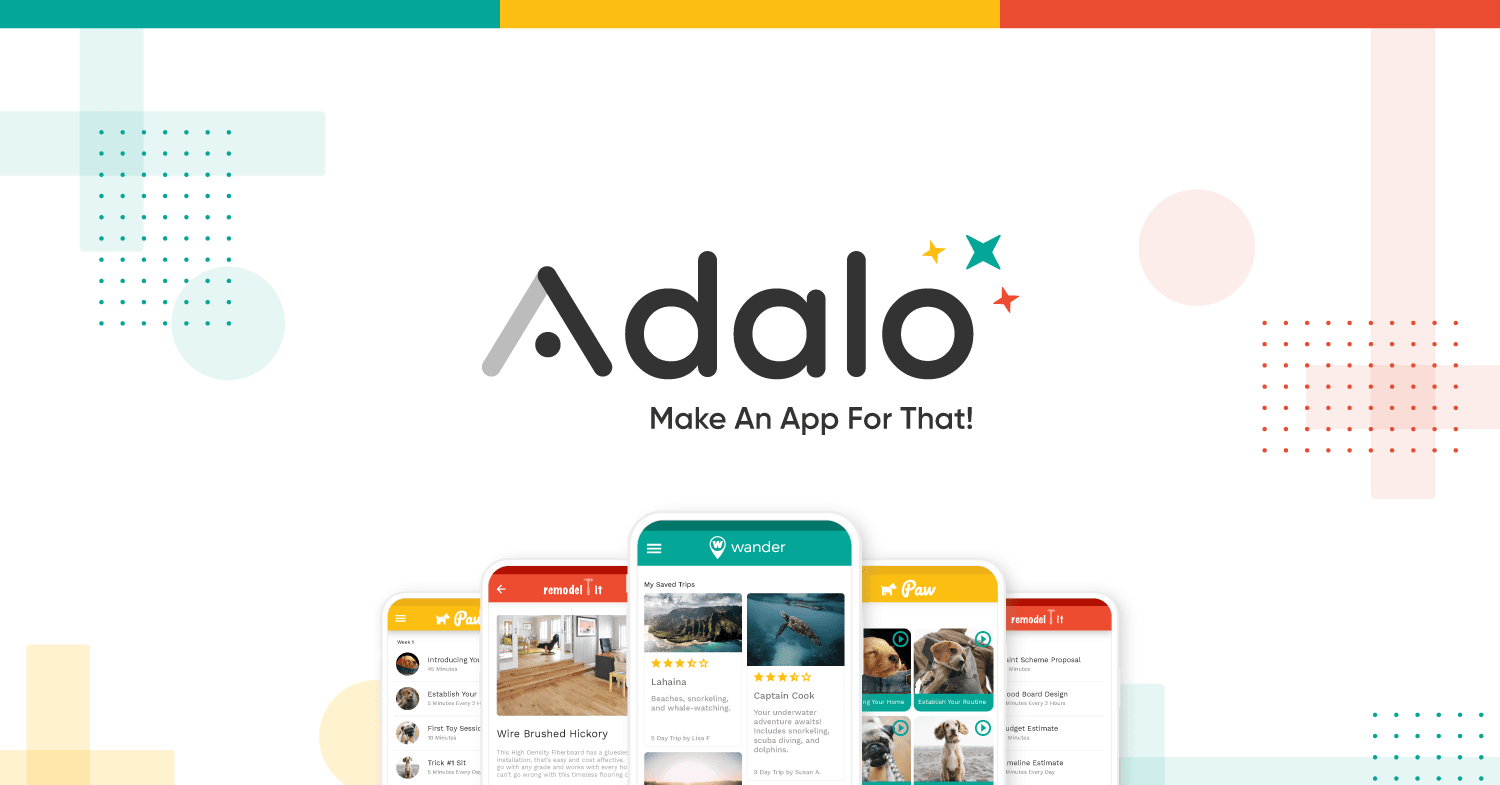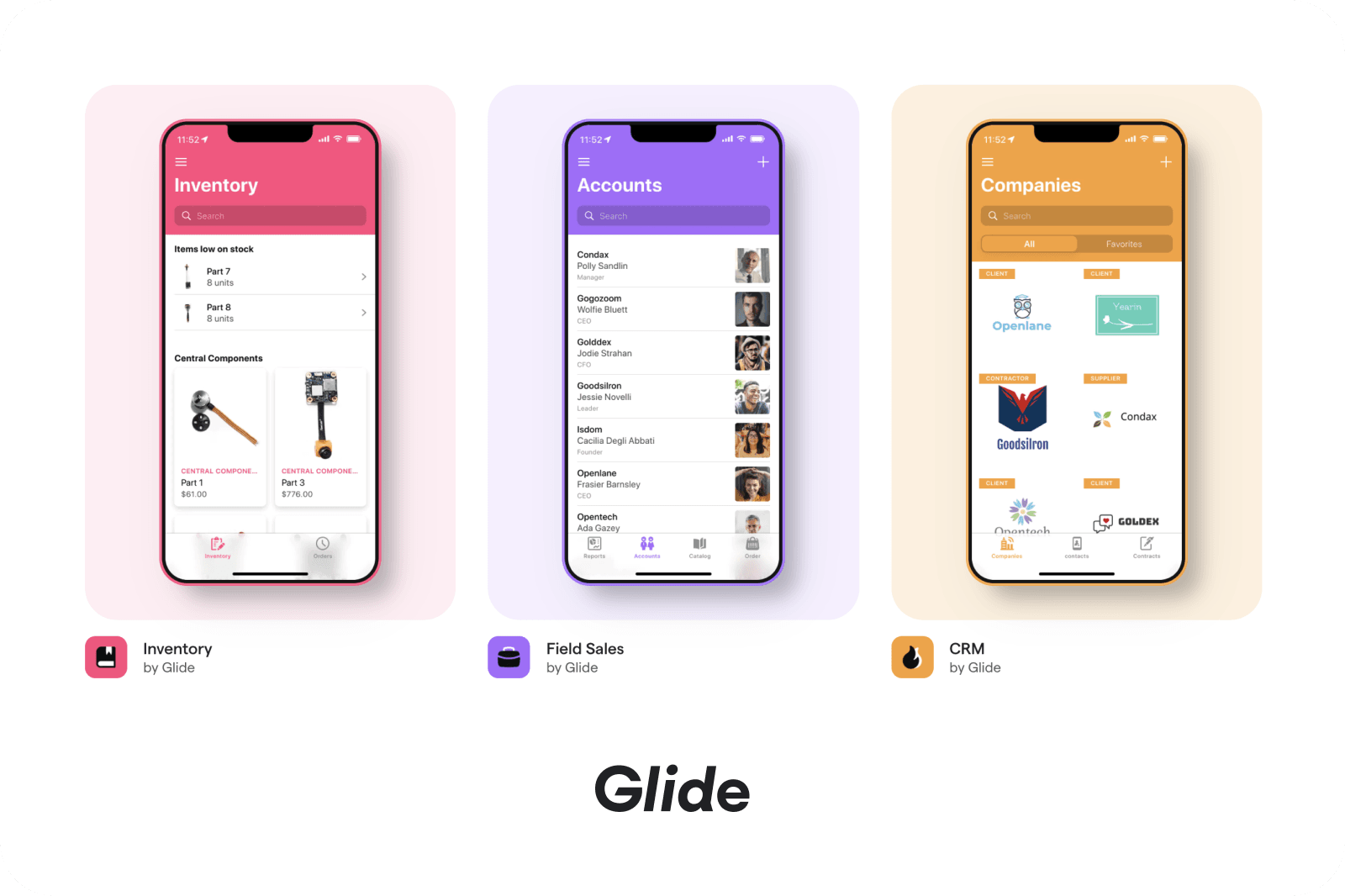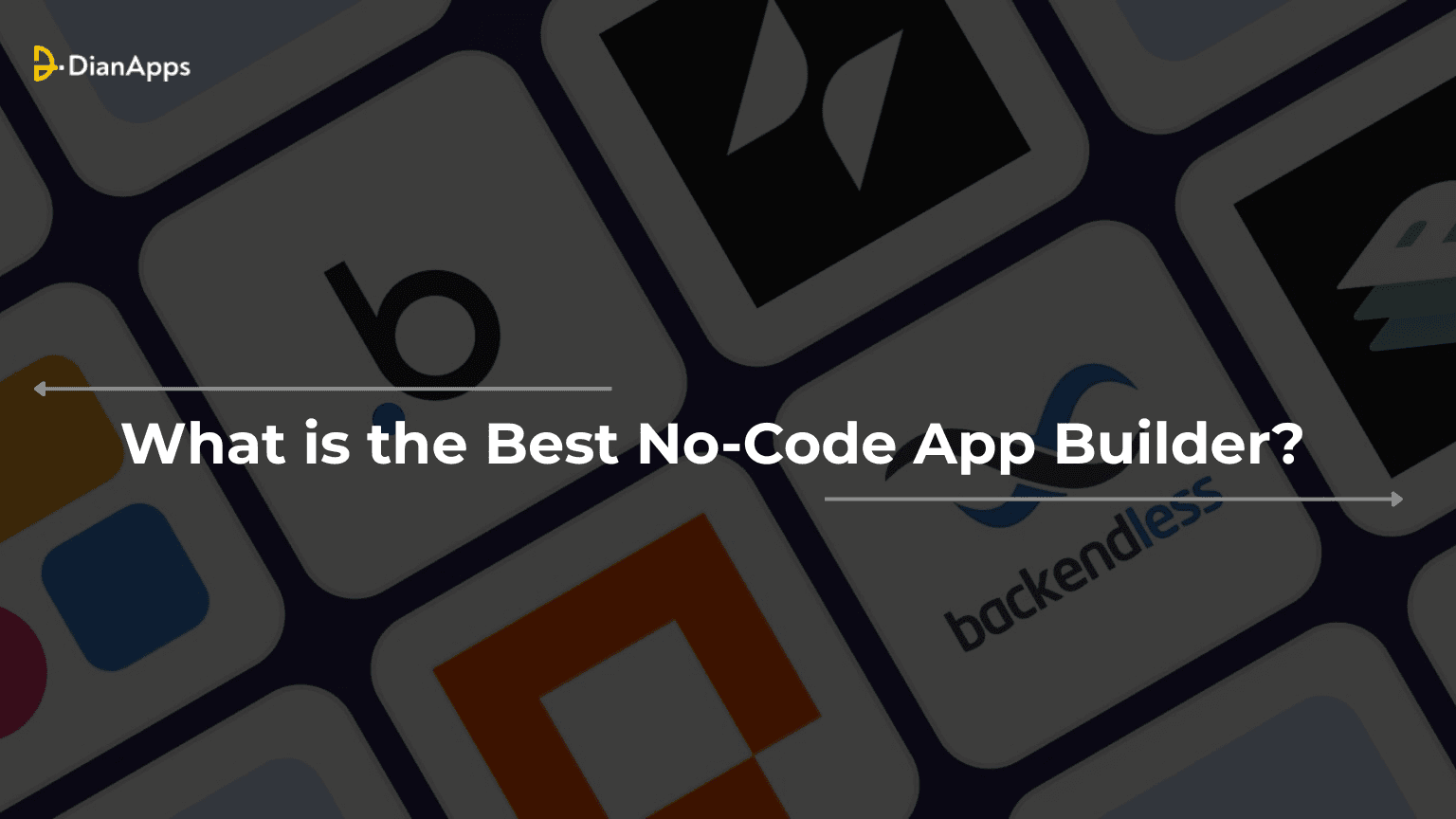Can You Build an App Without Writing a Single Line of Code?
You have a brilliant app idea. But there’s one problem, you’re not a developer. Hiring a tech team feels expensive, time-consuming, and intimidating. So the question arises: Is it really possible to build a powerful, fully functional app without writing code?
Yes, it is. And you’re not alone in thinking this way.
In fact, according to Gartner, by 2025, 70% of new business applications will be built using no-code or low-code platforms, up from less than 25% in 2020. The no-code revolution is not just a trend, it’s a transformation that’s changing the future of mobile app development services.
From solo entrepreneurs launching MVPs in weeks to enterprises speeding up internal tool creation, no-code app builders are empowering people with zero technical background to bring their ideas to life faster, cheaper, and smarter.
But here’s the challenge:
- With hundreds of platforms out there, how do you know which no-code app builder is actually worth your time and investment?
- Which tool gives you the flexibility to scale, the design power to stand out, and the integrations to keep everything running seamlessly?
In this blog, we’ll walk you through what no-code app builders are, compare the top-performing platforms in 2025, and help you figure out which no-code builder best suits your project, skillset, and goals.
What Is a No-Code App Builder?
A no-code app builder is a platform that allows you to create web and mobile applications without writing a single line of code.
Instead of traditional programming, these platforms offer visual development environments where users can drag and drop elements, set workflows, connect data, and launch functional apps, all through an intuitive interface.
Think of it as using Lego blocks to build a custom house. You don’t need to know how the
bricks are manufactured, you just assemble them into the structure you want.
But how do no-code platforms work?
No-code platforms are powered by pre-built templates, logic modules, third-party integrations, and a WYSIWYG (What You See Is What You Get) editor. You define how the app behaves using logical rules, like “if user taps this button, open screen B or send data to spreadsheet C.” Everything happens visually.
Who Are No-Code App Builders Designed For?
- Startup founders building MVPs quickly and affordably.
- Non-tech entrepreneurs who want full control of their product.
- Enterprises creating internal tools without overloading IT.
- Freelancers and agencies offering rapid prototyping and product delivery.
No matter your background, tech-savvy or not, no-code tools bring app development within reach. And they’re not limited to simple apps anymore. Many platforms now support API connections, native functionalities, real-time databases, and even AI integration.
Finding it overwhelming to hire developers for your startup? Here’s the non-tech guide you might be interested in reading!
Why Use a No-Code App Builder?
Building an app from scratch used to require a team of developers, months of coding, and a sizable budget. But not anymore. No-code app builders are flipping the script, making development faster, more affordable, and accessible to everyone.
So why exactly are businesses and entrepreneurs turning to no-code?
1. Faster Time to Market
Need to build an MVP fast? A no-code app builder gets you there quicker than traditional development ever could. No-code platforms significantly reduce development timelines. With pre-built components, integrations, and real-time previews, you can go from idea to app in days, not months.
2. No Technical Skills Required
You don’t need to hire developers or write a single line of code. From designing the UI to setting up workflows, app builders for non-coders have everything visual and intuitive, even for complete beginners.
3. Lower Development Costs
Hiring a dev team can cost anywhere between $20,000 to $150,000+, depending on complexity. In contrast, no-code tools like Glide, Adalo, or Thunkable start as low as $0/month, with scalable pricing as your app grows.
4. Flexible Prototyping and Iteration
Want to test a new feature? Update your UI? Integrate a different tool? No-code platforms let you experiment, iterate, and pivot quickly, the need to rewrite backend code every time.
5. Empowerment & Control
No more back-and-forth with developers. You stay in the driver’s seat, designing, editing, and launching your app on your terms.
6. Ideal for MVPs and Internal Tools
Launching a new product? Building a custom dashboard for your team? No-code platforms are perfect for Minimum Viable Products, internal CRMs, scheduling tools, booking apps, and more.
In short: No-code isn’t just a shortcut, it’s a smarter, leaner, and more inclusive way to build software. And with the surge in demand for faster digital transformation, these platforms are only getting better.
Top Features to Look for in the Best No-Code App Builders
What should you look for in a no-code app builder? With dozens of platforms on the market, it’s crucial to choose one that not only fits your project but also scales with your vision.
Here’s what the best no-code app development platforms in 2025 offer, and why these features matter:
1. Drag-and-Drop Interface
The best no-code platforms offer an intuitive, app builder with drag and drop UI that lets you design screens, layouts, and user journeys effortlessly, no coding, no complexity.
2. Cross-Platform Support (iOS, Android & Web)
Your app should run smoothly across devices. Look for builders that allow you to publish to iOS, Android, and the web, either as PWA or native apps. Wondering: “Can I build an iOS and Android app without code?” Yes, with the right platform.
Also read: How iOS app builders can help scale business!
3. Database Integration & Backend Support
Whether it’s Google Sheets, Airtable, Firebase, or built-in databases, the no-code app builder with database platform offers powerful data connectivity. Bonus if it includes secure user authentication and logic workflows.
4. API & Third-Party Integrations
Need to connect with Stripe, Zapier, Google Maps, or other tools? Make sure your builder allows API integration or supports third-party apps.
5. Pre-Built Templates & Components
A library of best app builder templates, like food delivery, eCommerce, booking, or social media apps, can help you get started quickly.
6. Custom Logic & Workflows
If you want your app to react based on user behavior (e.g., send email on form submit, display screen after login), your no-code builder must allow conditional logic, workflows, and automation.
7. Scalability & Performance
Your app should grow as your audience does. Pick a platform known for reliable performance, uptime, and the ability to scale.
8. App Store Deployment & Support
Planning to publish on the App Store or Play Store? Make sure the tool offers publishing assistance, exportable code, or one-click deployment features.
9. Pricing & Support
Free is great, but not if it’s limited. Compare pricing tiers, usage limits, and customer support options before committing. Look for responsive communities and learning resources.
Don’t choose a no-code app builder just because it’s trending. Choose one based on your goals, technical confidence, and future roadmap.
Top 7 No-Code App Builders in 2025
Which is the best no-code app builder in 2025? With a flood of tools claiming to help you launch apps without writing a single line of code, choosing the right one can be confusing.
To simplify your decision, we’ve handpicked the top no-code app builders dominating the market this year, based on functionality, user feedback, scalability, and real-world use cases.
1. Adalo

Adalo is often the first answer to the popular query, “Which no-code builder is best for mobile apps?”
With an easy-to-use drag-and-drop interface, native database, and real-time app previews, it’s perfect for turning your idea into a working mobile app fast. You can also publish directly to the App Store and Google Play, a feature most users love.
Why choose Adalo?
- Beautiful UI components
- In-app purchases supported
- Built-in database
- Community plugins & integrations
2. Glide

Glide turns Google Sheets into sleek mobile apps without code. So, if you’ve ever searched “Can I build an app from a spreadsheet?”, this is your go-to tool.
With a rich UI, responsive layout, and no learning curve, Glide is excellent for dashboards, directories, or team tools.
Key features:
- Connects to Airtable, Excel, and Google Sheets
- Includes role-based access
- Responsive across desktop and mobile
- Works great for CRM-style apps
3. Thunkable

Thunkable is a visual no-code platform that allows you to build iOS and Android apps simultaneously. If you’ve typed “How to create an Android and iOS app without coding?”
Thunkable is an answer worth trying. It supports logic blocks, custom functions, API integration, and real-time testing.
What stands out:
- Native app publishing
- Advanced logic builder
- API and Firebase integration
- App monetization support
4. Bubble

Bubble is widely known as the most powerful no-code platform for building web applications. Founders often ask, “Can you build a full startup with no-code?”, and Bubble is the reason the answer is yes. Think of it as the WordPress of web apps, but 10x more flexible.
Bubble offers:
- Full database backend
- Custom workflows and logic
- Responsive web design
- Third-party plugin marketplace
5. Bravo Studio
If you’ve asked, “Can I convert my Figma design into a real app?”, Bravo Studio is your dream come true. It connects Figma with APIs and turns your design files into fully functional mobile apps without writing code.
Best features:
- Figma integration
- Real-time app preview
- REST API connection
- Native mobile publishing
6. Appgyver (Now SAP Build Apps)
Appgyver is often searched for by users asking, “Is there a free no-code app builder for professionals?” The answer: Yes, and it’s Appgyver. Now part of SAP, it’s a robust, professional-grade platform for building complex logic and interfaces with zero cost.
Why it’s powerful:
- Drag-and-drop UI
- Powerful conditional logic
- REST API, authentication & backend tools
- Production-level scalability
7. Kodular

Kodular is a visual no-code tool popular in the education and DIY sectors. Search trends like “Free app builder for students” or “no-code Android development for beginners” often lead users here. It’s simple, gamified, and focused on Android-only apps.
Highlights include:
- MIT App Inventor base
- Built-in monetization options
- Educational tutorials and support
- Great for schools and side projects
Quick Guide on Choosing the Right No-Code App Builder
Choosing the best no-code app builder depends on your goals and use case. Here’s a quick guide:
- Startups & MVPs: Use Bubble, Adalo, or Thunkable for fast, scalable apps with custom logic.
- Internal Business Tools: Glide, Appgyver, and Bravo Studio work best for data-driven apps with role management.
- Ecommerce Apps: Adalo, Bubble, and Thunkable support payments and native mobile storefronts.
- Learning & Personal Projects: Kodular, Thunkable, and Glide offer free plans and easy drag-and-drop builders.
- Design-First Apps: Bravo Studio, Adalo, and Glide help convert Figma designs with API integrations.
- Key factors: Check platform type, ease of use, publishing options, integrations, pricing, and support.
Also read: How to build your own app from concept to launch!
Final Thoughts
No-code app builders are transforming how apps get made, fast, affordable, and accessible to everyone.
The best no-code platform for you depends on your project type, technical skills, and long-term goals.
Whether you want to launch a startup MVP, build internal tools, or create a design-focused app, there’s a no-code builder ready to help.
Test a few platforms to find your perfect match and start building today without writing a single line of code.










Leave a Comment
Your email address will not be published. Required fields are marked *